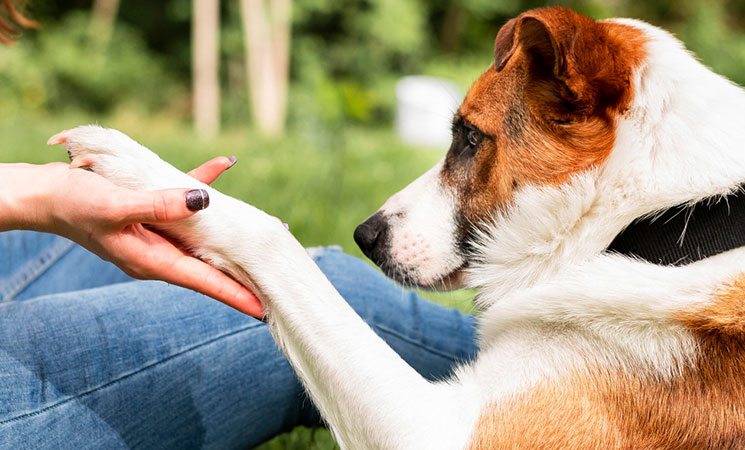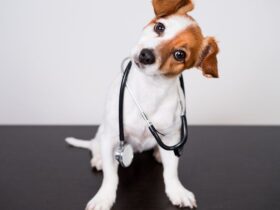Owning a dog is a rewarding experience filled with joy and companionship. However, emergencies can arise unexpectedly, and knowing how to respond swiftly and effectively can be crucial. This comprehensive guide provides dog owners with essential first aid knowledge, ensuring you’re prepared to handle a variety of situations to keep your furry friend safe and healthy.
Understanding Basic Dog First Aid
Dogs, like humans, can face a multitude of emergencies. These can range from minor injuries to life-threatening situations. Being prepared with basic first aid knowledge is essential for every dog owner. This includes understanding how to care for wounds, perform CPR, and recognize signs of distress in your dog. These skills can be the difference between life and death when waiting for professional help to arrive.
First aid for dogs also involves knowing your pet’s normal behaviors and physical condition. Regularly check your dog’s eyes, ears, nose, and mouth, and be aware of their usual activity levels and appetite. This familiarity helps you quickly notice any changes that might indicate a problem.
Essential First Aid Supplies for Dog Owners
Having a well-stocked first aid kit specifically for your dog is vital. This kit should include:
- 1. Bandages and gauze: For covering wounds and controlling bleeding.
- 2. Antiseptic wipes and solution: To clean cuts and prevent infection.
- 3. Tweezers: To remove foreign objects like splinters or stingers.
- 4. Digital thermometer: To check your dog’s temperature.
- 5. Hydrogen peroxide: To induce vomiting if directed by a veterinarian.
- 6. Styptic powder: To stop minor bleeding, such as from a broken nail.
- 7. Scissors: To cut bandages or fur around a wound.
- 8. Muzzle: To protect yourself and others if your dog becomes frightened or aggressive.
- 9. Blanket: To keep your dog warm and provide comfort.
Keep these items in a durable, waterproof container and regularly check to ensure nothing is expired or missing. Having this kit easily accessible at home and carrying a smaller version while traveling can make a significant difference in emergencies.
Responding to Common Dog Emergencies
- Cuts and Scrapes
Dogs are naturally curious and can easily get cuts or scrapes during their adventures. To prevent infection, clean the wound gently with antiseptic wipes and cover it with a sterile bandage. If the wound is deep or doesn’t stop bleeding, seek veterinary care immediately. Monitoring the injury for signs of infection, such as swelling or redness, is crucial.
- Choking
Dogs can choke on small objects, bones, or even their own toys. If your dog is choking, try to remove the object carefully. Be cautious to avoid pushing it further down. If you’re unable to remove the object, you might need to perform the Heimlich maneuver.
For small dogs, hold them upside down by their back legs and give a few gentle shakes. For larger dogs, place your hands just below the rib cage and give quick, upward thrusts. These actions can dislodge the object and restore normal breathing.
- Insect Stings and Bites
Dogs are curious by nature and often explore areas where they might get stung or bitten by insects. If your dog is stung, remove the stinger with tweezers and apply a cold compress to reduce swelling. Keep an eye out for allergic reactions, such as excessive swelling, hives, or difficulty breathing. If these symptoms occur, seek veterinary assistance immediately, as they can indicate a severe reaction. Additionally, consider incorporating supplements like omega 3 for dogs into their diet, as they can help improve skin health and reduce inflammation.
- Heat Stroke
Heat stroke is a serious condition that can occur if a dog is exposed to high temperatures or overexerts itself in hot weather. Symptoms include excessive panting, drooling, lethargy, and in severe cases, collapse. Move your dog to a cool, shaded area and offer small amounts of water. Use a damp cloth to gently cool your dog, focusing on the head, neck, and chest. Avoid using ice or very cold water, as this can cause shock. Gradual cooling is safer and more effective.
- Poisoning
Dogs can ingest toxic substances, whether it’s something they find on the ground or a household chemical. If you suspect your dog has been poisoned, try to identify the substance and contact a veterinarian immediately.
Do not induce vomiting unless instructed to do so by a professional. Knowing what your dog ingested is crucial for the vet to provide the appropriate treatment. Common toxic substances include certain foods like chocolate and grapes, plants like lilies, and household items like antifreeze and rodenticides.
- Fractures and Broken Bones
Accidents can happen, leading to fractures or broken bones. If you suspect your dog has a broken bone, it’s important to immobilize the affected limb to prevent further damage. Use a makeshift splint if possible, and avoid trying to set the bone yourself. Keep your dog calm and restrict their movement as much as possible while you seek veterinary attention. Providing comfort and reassurance during this time is essential for your dog’s well-being.
Preventing Emergencies with Proper Care
Preventing emergencies is just as important as knowing how to handle them. Regular check-ups with your vet and maintaining a safe environment for your dog can significantly reduce the risk of emergencies.
One way to ensure your dog’s safety is by using an invisible fence. This technology helps keep your dog within the boundaries of your property, preventing them from wandering into dangerous areas like busy roads or neighbor’s yards. Regularly inspect your home and yard for potential hazards, such as sharp objects or toxic plants, and make necessary adjustments to keep your dog safe.
CPR for Dogs: A Lifesaving Technique
CPR is a critical skill that can save your dog’s life in an emergency. If your dog is unconscious and not breathing, check for a pulse by feeling their chest or inner thigh. If there is no pulse, begin CPR immediately.
For small dogs, use one hand to perform chest compressions by placing your fingers around their chest and compressing gently. For larger dogs, place one hand over the other and compress the chest at the widest part, pushing down about one-third of the chest width. Aim for a rate of 100-120 compressions per minute. After 30 compressions, give two rescue breaths by sealing your mouth over your dog’s nose and blowing gently. Repeat this cycle until your dog starts breathing or professional help arrives.
Handling Minor Injuries
Not all injuries require immediate veterinary attention but they still need care. For minor cuts, clean the area with antiseptic and apply a sterile bandage. If your dog has a minor burn, cool the area with cold water for a few minutes and then cover it with a clean, damp cloth. Avoid using human ointments unless directed by a vet, as some ingredients can be harmful to dogs.
Rest is often the best treatment for minor sprains or strains. Limit your dog’s activity and provide a comfortable place for it to rest. Monitor the injury for signs of swelling or continued pain, and consult your vet if symptoms persist.
Recognizing Signs of Distress
Dogs cannot verbally communicate when something is wrong, so it’s up to the owner to observe changes in their behavior or physical condition. Signs of distress can include excessive panting, limping, vomiting, or sudden changes in behavior like aggression or withdrawal.
Other indicators of distress may be more subtle, such as changes in eating or sleeping habits. Early recognition of these signs allows for prompt action and can prevent minor issues from becoming severe problems. Always trust your instincts and consult your vet if you notice anything unusual.
Preparing for Travel Emergencies
Traveling with your dog can be an enjoyable experience. Still, it requires additional precautions to ensure their safety. Pack a travel-sized first aid kit that includes all the essentials from your home kit. Familiarize yourself with local veterinary services at your destination and keep their contact information handy.
Ensure your dog is secure in a crate or with a seatbelt harness while traveling to prevent injuries. Regular stops for bathroom breaks and exercise can help keep your dog comfortable and reduce stress. Keeping a routine as close to home as possible helps in making the travel experience smoother for your dog.
Knowing When to Seek Professional Help
While first aid can stabilize a condition, professional veterinary care is essential for comprehensive treatment. It’s important to know when to seek help. Severe injuries, persistent symptoms, or any signs of poisoning require immediate attention from a vet.
Even if a situation seems under control, it’s always better to err on the side of caution. Consult your vet for advice and follow their recommendations. Quick action and professional care can make all the difference in your dog’s recovery.
Creating a Safe Home Environment
Creating a safe environment for your dog reduces the risk of emergencies. Regularly inspect your home and yard for potential hazards. Secure electrical cords, keep harmful substances like cleaners and medications out of reach, and ensure your dog’s toys are safe and appropriate for their size and chewing habits.
Make sure your dog has a comfortable place to rest and access to fresh water at all times. Safety gates can help prevent access to dangerous areas like stairs or rooms with toxic plants. Regularly check your dog’s collar and leash for wear and tear to avoid accidents during walks.
Educating Family Members
Every family member should be familiar with basic dog first aid. Training everyone ensures that your dog has the best chance of receiving immediate help in an emergency. Practice emergency scenarios regularly so everyone knows what to do and where to find the first aid kit.
Children, in particular, should be taught how to approach and handle the dog calmly during an emergency. This knowledge not only helps in emergencies but also fosters a responsible and caring attitude towards pets.
The Importance of Regular Vet Visits
Routine veterinary visits are crucial for your dog’s overall health and well-being. Regular check-ups allow your vet to catch potential issues early and keep your dog up-to-date on vaccinations and preventive care.
Your vet can also provide valuable advice on diet, exercise, and how to handle emergencies specific to your dog’s breed and health history. Building a good relationship with your vet and keeping them informed about any changes in your dog’s behavior or health is key to providing the best care for your pet.
Conclusion
Being prepared for emergencies is an essential part of dog ownership. Understanding first aid, recognizing signs of distress, and knowing when to seek professional help can make all the difference in keeping your dog safe and healthy. Equip yourself with knowledge and supplies, and always prioritize your dog’s safety and well-being. With these guidelines, you can confidently handle most emergencies and ensure your furry friend’s health and happiness.














